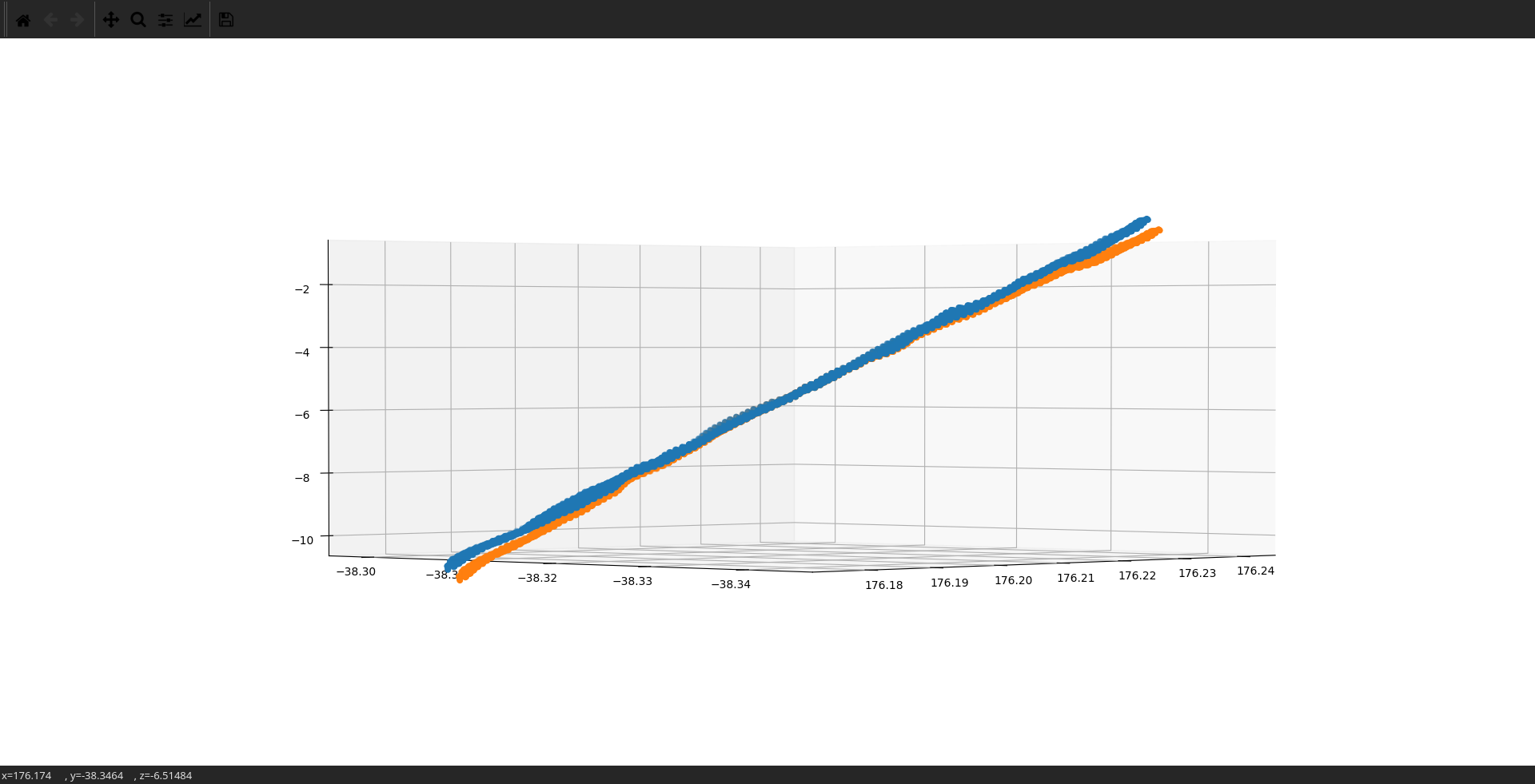...
Most of the NSHM plots are quite close to the surface plots, with the exception of HikRaukmax, where the surface has a noticeably large curvature in the middle of the NSHM region.
First implementation
The first implementation is to apply a constant curvature to the dip. T
To do this each of the points in the fault must be moved such that they lie on the surface of a cylinder with a given radius (Our measure of curvature).
To ensure that the calculations are correct the distance between subfaults must be the same before and after the curvature is applied.
Using some reference dip row, chosen as the center row for now, as the stationary row, the other rows are moved back and towards the center some amount.
For test purposes the fault Hossack was used. A curvature of 58km was selected, as this would result in a shift of approximately 500m for the end rows of a Hikurangi min scenario, which would be used as the first Hikurangi test case.
The current state of the curvature script is visible above. The bottom points seem to have moved in the right direction, and computations show that all rows are ~100m from the adjacent row, as they were before the shift.
The top points however seem to be moved too far up and right, as all the points should be moved back from the plane in a direction normal to the plane, and then translated towards the center of the plane where the reference row is.
